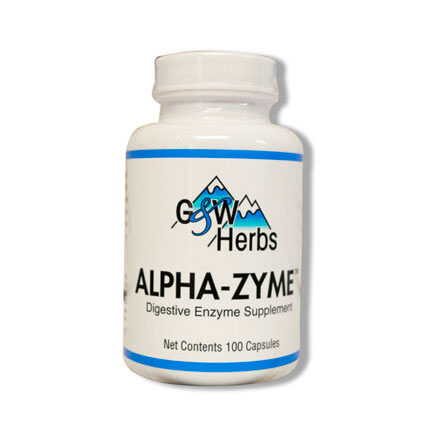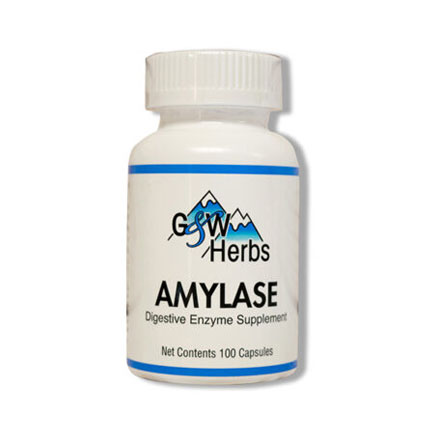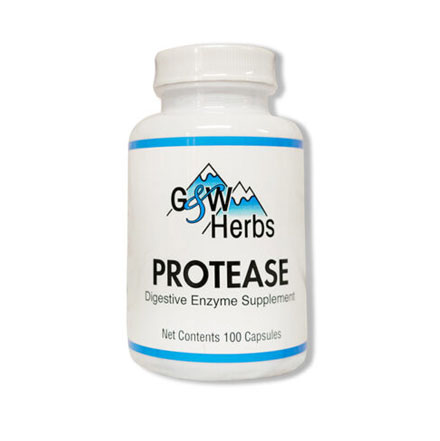
According to the Surgeon General’s report on nutrition and health 8 out of 10 leading causes of death in the United States are diet related.
Taking this information into consideration, we must look at the average diet as the reason for the high rate Degenerative Disease in this country. To draw a proper comparison we must find a biological population not highly subject to Degenerative Disease conditions.

Cultured Enzymes
As human populations worldwide suffer from these conditions we must turn to the wild animal populations for our answers. As we compare these populations on a dietary scale we will see the one prominent difference is the heating and processing of foodstuff. The wild animal populations are incapable of firing foods and are also virtually free of diseases such as cancer, Aids, etc. However, these same creatures, when kept in captivity and fed a “nutritionally balanced” diet of fired, preserved foods, do in fact develop the exact same disease conditions as the “more intelligent” species that are caring for them. This simple comparison allows us to determine the primary problems in our dietary intake, giving us the ability to change these conditions through intelligent manipulations of dietary habits. Having determined that cooking is the main variation between wild animal and human dietary life-styles we have a very solid foundation on which to build. The next logical step must establish a clear difference between fired foods and raw foods.
Although at the onset there are many noticeable changes when food is heated, nutritional components remain fairly intact. Proteins, fats, and fiber though seriously altered, are left intact. Vitamins and minerals that are damaged are replaced by fortification during processing. This leaves one area of consideration to provide an answer to our question. This is the naturally occurring enzyme factors found in all foods before cooking, processing and preservation. This not only applies to plant foods but to “all foods” including carnivore diets. When consumed in the raw natural state, all foods, whether animal or vegetable contain high amounts of enzymes.
Research has proven that heating, even at relatively low temperatures, destroys virtually all the naturally occurring enzymes in food. Why are these enzymes so important? What do enzymes do that help wild populations maintain a higher level of health? Although enzymes are responsible for every biological function that takes place in all living organisms, and are the determining factor between living and dead matter, the primary function they provide from a dietary perspective is the digestive capacity. Exogenous enzymes have the ability to begin and possibly complete the digestion of food upon consumption before the body is called upon to manufacture the pancreatic enzymes necessary to digest and to properly assimilate the dietary constituents of that food.
A Physiology for Pre-Digestion:
Clearly by design, we see that wild animals rely on exogenous enzymes in the food supply to accomplish dietary predigestion. Are our bodies so different that our own digestive physiology allows Time for exogenous to act on foods consumed in the upper or gastric portion of the stomach. Masticated foods remain in this portion of the stomach for an hour or more while hydrochloric acid is concentrating in the lower or pyloric portion of the stomach. This may seem a short time for any significant pre-digestive activity to occur, but food enzymes are very fast and efficient. This can be observed by bruising an apple and noticing how quickly the enzymes begin working, by evidence of discoloration of the breached area. This experiment is best performed on tree picked fruit, as irradiation (which is very damaging to enzymes) has been approved as a method of extending the shelf life fresh raw foods. Unfortunately, this technological advancement also expedites the nearly complete removal of exogenous enzyme sources from the average consumer’s diet.
The Enzyme Deficient Diet:
As science continues to create new ways to extend the shelf life of food by removal or destruction of enzymes. Consumers continue the use of standard culinary practices. Society continues to suffer from the effects of an enzyme deficient diet. Although these practices are both pleasant and necessary in our modern world, we can no longer ignore the negative effects of enzyme deficiency. Any food that is cooked, steamed, canned, pasteurized, baked, broiled, or irradiated has lost virtually all enzyme activity.
Digestion in the Absence of Enzymes:
The human body is an incredibly resilient organism using enzymes to control every known biochemical process. Every cell in the body produces enzymes which are used to power physical movement physical movement, regulate organ function, and generate the immune system. Even thinking and breathing are processes that depend upon enzymatic activity. Digestion of food is also dependent on enzymes. In fact, an enzyme is the only known compound capable of the hydrolysis of food. Digestion of foodstuffs in the absence of naturally occurring enzymes negates the process of pre-digestion forcing the body to produce pancreatic enzymes to digest 100% of the nutritional factors of the food. This is the beginning of degeneration of the organism. As the body must provide digestive enzymes to sustain some level of dietary integrity it must sacrifice metabolic enzymes to do so. This fact was best proven by Dr. Paul Kutchacoff in his studies entitled “The Effects of Food Cooking on the Blood Formulas of Man”. In this work, Dr. Kutchacoff found that shortly after ingestion of cooked foods the white blood cell count was sharply increased while ingestion of raw foods showed no such increase. This fact would suggest that the body is isolating the enzymes of the immune system to assist in the digestion of enzyme void foods. This concept of robbing the metabolic enzyme pool for digestion becomes very dangerous when we sacrifice the integrity of the immune system, especially when we suffer such a high rate of the immune related diseases. Unfortunately the body’s attempt to complete digestion by this means proves most inadequate. This is because exposure to pancreatic enzymes is only possible after the food leaves the stomach which means that digestion is beginning at the point where the system should be assimilating the nutritional factors for utilization. The result is poorly digested or undigested foods, some of which may pass into the system in an attempt to be utilized, but most of which will simply move into the colon and begin the putrefactive process before being excreted.
The Putrefactive Process in Promotion of Disease:
Consumption of enzyme deficient foods and the bypassing of natural pre-digestion marks the beginning of the putrefactive process and promotes conditions conductive to degenerative disease. Materials that remain undigested, or ate partially digested, bypass the uptake sites in the small intestine and collect in the colon. The limited enzyme contribution by the pancreas is soon exhausted and any possible assimilation is completed, leaving the undigested foodstuff to undergo the process of bacterial breakdown or putrefactive. Unlike fermentative bacteria, which are beneficial putrefactive enteric bacteria produce extremely toxic by-products. These toxins, especially those related to protein putrefactive, are drawn from the colon during the compressive stages and filtered through the eliminative organs creating even greater strain on an already overtaxed system. The first line of defense is the liver which, if functioning properly, can remove any of these harmful toxins only to empty directly back into the intestine for removal by excretion, if the system is moving regularly. Some of these toxic compounds are not removed by the liver and are released into the general circulation where they travel throughout the body. Those which do not accumulate in weakened tissue, arteries, etc., are then filtered through the kidneys and excreted via the urine. This process is known as intestinal toxemia and has been associated with degeneration and disease.
The Protein Connection to Long-Term Degeneration:
Although protein is the most difficult dietary constituent to digest and is a major contributor to intestinal toxemia, it is also a most important nutritional factor to consider. Proteins are the building blocks of the body and are necessary to transport vitamins and minerals to the blood stream. The liver uses protein to regulate blood sugar levels through the process of gluconeogenesis. The body uses protein to make hormones and most importantly, to make enzymes. The fact marks the protein connection to ling term degeneration as the weakened pancreas fails to deliver dietary proteins for use in these areas. The body is unable to secure the raw materials to produce the enzymes needed to digest protein. The effects of this process can be observed by considering the health problems that are occurring in our society at present. An endless list of hormonal imbalances such as PMS, blood sugar problems such as Hypoglycemia, can be associated to protein deficiencies. A body that cannot deliver sufficient quantity and quality proteins through dietary means must use raw materials from inner sources. These materials must come from the breakdown of the organism itself. This process is known as catabolism. The body literally must consume itself in order to continue to function. Long-term survival dictates that only the least amount of materials necessary be taken for this purpose. Years of slow deterioration of the quality proteins in the body set up conditions conductive to serious disease and poor quality of life.
Genetic Predisposition to Enzyme Insufficiencies:
A great deal of evidence has surfaced to support the fact that enzyme potential is passed on to future generations. A most convincing work was completed by Dr. Henry Pottenger, who carried out a very comprehensive study of dietary effects on cat physiology. Dr. Pottenger scientifically grouped cats and regulated their diets. One group being fed only raw (enzyme rich) foods, another group only cooked (enzyme void) foods. What resulted can be seen as conclusive evidence that enzyme potential is passed onto future generations. While the raw food animals remained stable and healthy, the cooked food animals rapidly deteriorated and carried the deterioration into the generic structure of their offspring. Pottenger’s cooked food cats suffered many of the same diseases that are seen in human population today. Later generations even lost the ability to perpetuate the species, while the raw food animals displayed vigorous vitality with each new generation. The practice of researching family background for genetic disease traits is well accepted by the medical establishment. This concept also applies to traits of vitality and longevity as Pottenger’s cat studies suggest. The link between enzyme potential and vibrant health stands on firm scientific ground and with out doubt, can be passed on in the organ reserve of the offspring.
Maintaining Health and Longetivity:
Through augmentation of the diet using supplemental enzymes, we can replace the lost exogenous enzyme factors so vital to pre-digestion and assimilation of the dietary intake. This action keeps the daily intake from becoming a toxic dross to the system and increase nutritional efficiency. Enzyme supplementation is also an effective means of cleaning up years of buildup of undigested food throughout the body and enhancing the organ reserve. By supplementing with high potency, quality enzymes we can activate the cardinal rule for maintaining health and longevity, “feed the body, clean the body”.
Enzyme Profile:
The following is a brief summary of the cultured enzymes that should be considered most critical to supplementation for pre-digestive needs.
Cultured Enzyme vs Pancreatic Enzymes:
The use of enzymes derived from animal organs for digestive disorders becomes a practice in futility when compared to Cultured Enzymes.
Although animal pancreatin may prove highly valuable in many therapeutic applications. its use as a digestive aid is at best inefficient. Pancreatic enzymes, whether animal or human, are limited by environment, as they require a high pH (7.5+) before activity occurs. This fact makes proper pre-digestion impossible as the acid environment of the stomach is well below a p of 6.0. Cultured Enzymes most prominent advantage is a very wide range of activity. Some Cultured Enzymes are active in a pH as low as 2.0 and high as 12.0 making them the product of choice for pre-digestion.

Alpha-Zyme
For people with Ulcers, or other Stomach or Intestinal sores. Formulated to replace the natural occurring lost enzymes during cooking, processing and preparation of the average mixed diet. The cultured Protease Enzymes have been omitted from this formulation to accommodate those who suffer from Gastritis or Gastric/Duodenal Ulcers. High quality herbal concentrates have also been added to help soothe and appease these conditions. May also be taken on an empty stomach when acidic discomfort occurs. The Alpha-Zyme formulation is intended for the temporary use. As Gastric complications are alleviated, a transition to the Cultured Multiple Enzyme is recommended.

Amylase
Works on the digestion of carbohydrates.
Useful for Asthma, Sore Throat, Swelling, Skin Eruptions, Hay Fever, Insect Bite, Allergies, Histamine Reactions, Sinus Conditions and Joint Mobility.

Cellulase
Works on the Digestion of Fiberous Foods
Carries Nutrients to the cells and Toxins back from the Cells and out through the Intestinal Walls. Also very beneficial in helping to detoxify the Colon. Useful for Food Allergies, Drug Withdrawal, Inability to digest raw foods and helps with pain syndromes.

Lipase
Works on the Digestion of Fats
Try for Obesity, Chronic Inflammatory and Cardiovascular Conditions such as High Blood Pressure, Hypochlorihydia Lymphatic swelling, joint pain with swelling, and Psoriasis.

Pregest
PREGEST is a Multiple Enzyme Formula. It digests Proteins, Starches, Fats, Fiber, Sugar, and Dairy Products
Useful for digesting all foods and should cover the average Americans Daily Diet. Also helps neutralize the toxins created by cooking foods. May also be taken between meals to help build up the body’s enzyme reserves. Contains: Protease, Amylase, Lipase, Cellulase, Lactase, Maltase, Sucrase, Cultured Enzymes, O2 Factor and Papaya Leaf. An all purpose enzyme.

Protease
Works on the Digestion of Proteins
May help relieve Fever, Infection, Colds, Flu, Sore Throat, Parasites, Candida, Acne, Depression, Anxiety, Fatigue, Insomnia, Inflammation, Lowered Immune Response, Hypoglycemia, PMS, Osteoporosis, Acne, and Traumatic Injuries.